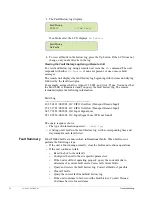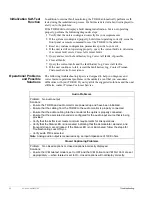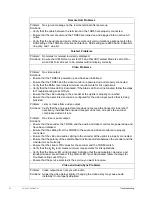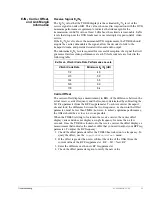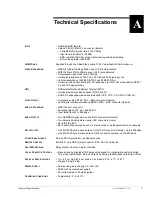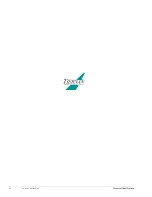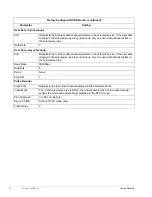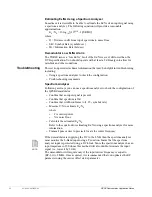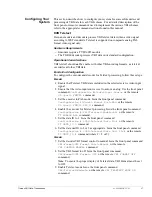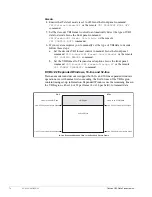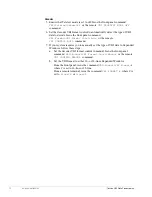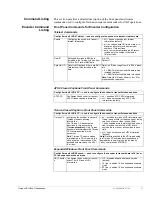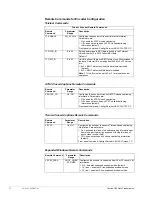
QPSK Demodulator Application Notes
01-0868-401B 12/02
59
C
QPSK Demodulator
Application Notes
This appendix contains the following QPSK demodulator technical information:
■
Configuration
■
Rates and channel spacing
■
Estimating E
b
/N
0
■
Troubleshooting
Configuration
This section provides additional technical configuration information.
Industry Standard LNB Frequencies
The tuner input frequency for the demodulator is divided into two components
(RF and LO) to correlate with industry standards. The following table lists the RF
range for common LNB LO frequencies.
Demodulator Tuner SAW Filter
The demodulator tuner has a SAW filter (bandpass) for rejecting out-of-band
noise. It is important that you correctly specify the input L-Band frequency to
insure that the input spectrum is within the passband of the filter.
Check the Offset parameter to confirm that the acquired carrier is within 2
Mhz of
the location you specified when entering the RF and LO parameters.
For the procedures used to query to offset parameter and to correct the offset by
adjusting the RF and LO parameters, refer to the chapter on troubleshooting.
Data Inversion/ Spectral Inversion
In QPSK modulations, every symbol consists of two bits of data. These two bits
are commonly referred two as the I and Q samples. Data inversion occurs when
both I and Q are inverted. Spectral inversion occurs when either I or Q are
inverted. Spectral inversion is caused by selecting the lower sideband instead of
the upper sideband in the mixing and RF filtering process.
All Tiernan demodulators automatically check for and compensate for
data/spectral inversion.
RF Range (Mhz)
LNB LO
(Mhz)
Input L-band
Range (Mhz)
Type
3450 - 4200
5150
950 - 2150
C band
10950 - 11700
10000
950 - 2150
—
11700 - 12450
10750
950 - 2150
Domestic Ku Band
12250 - 13000
11300
950 - 2150
—




